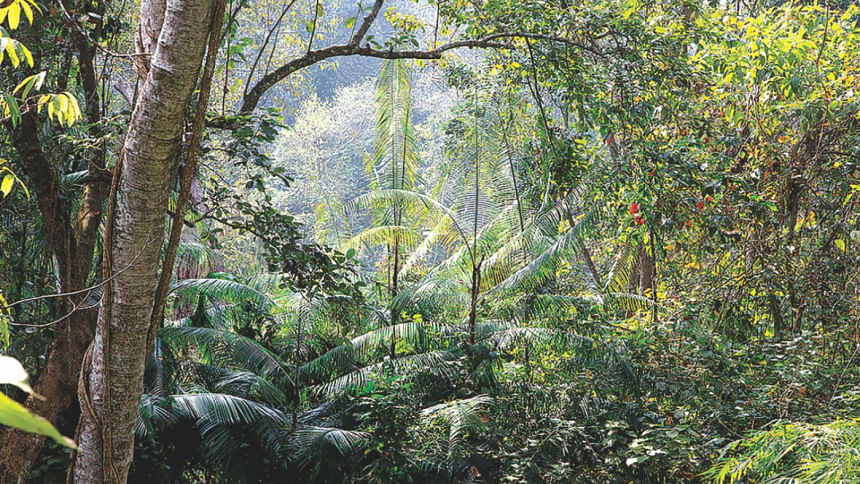The Forest at Kalenga

Rema-Kalenga Wildlife Sanctuary is 133 kilometres north-east of Dhaka in Chunarughat Upazila of Habiganj district. Driving from Dhaka can take four to five hours. The last few kilometres are rough going, negotiated preferably during the dry winter months.
This protected area of 1796 hectares was declared as a Wildlife Sanctuary in 1982, carved out of the Tarap Hill Reserve Forest which itself was established in 1927. It is one of the few places in Bangladesh that has remnants of the primary (that is, not planted) forests that once existed in our country. Despite the difficult approach, I love visiting here. Usually I have time for only a day trip – a detour – on my way to Dhaka after finishing work in Sylhet or Srimongol.
Last week, however, I decided to spend more time exploring Kalenga. I booked a night at Tarap Hill Eco Cottage, a home-stay cottage situated just outside the entrance and run efficiently and cleanly by its affable owner Lashu. I arrived just in time for lunch and set out soon afterward with the enthusiastic eco-guide Abdur Rahim who lives in the Kalenga village and knows this forest well.
As light was falling fast, we stayed on the main path through the reserve, taking detours here and there. Climbing a hill to our left, we found a mixed flock of small birds including Grey-headed Canary Flycatchers, two types of flowerpeckers, barbets, as well as sunbirds and warblers, all of them feeding around a banyan tree. Mixed flocks pass through the forest like waves and park themselves around a particular tree to feed before moving on to the next target. We continued walking after this flock had passed and further down the road encountered a small flock of various colourful sunbirds on a koroi tree. Nearby on another banyan, a barbet flew from branch to branch, engorging itself on the fruits. It was small like the Coppersmith Barbet but its colours did not match. Later at home I identified it as a rare Blue-eared Barbet.
That night, armed with flashlights, we set out to search for the Slow Loris, a nocturnal primate, but in two hours we saw only a Jungle Cat.
The following morning we walked along the park's northern edge, rice paddies on one side, trees on the other. These were planted trees here at the outskirts of the forest, but presently the paddyfields ended and we entered the main forest. The ancient trees came into view, including chapalish, wild fig and chhatim, and very tall gorjons. The undergrowth had a variety of plants and herbs with abundant climbers. The trail turned and twisted and after every turn we were greeted with the sight of a rich, dense, primeval green wall comprised of flora of all sizes and shapes, with shafts of light from the morning sun slicing through the tall trees.
We looked for the rarer birds – the forest has Black Bazas, Kalij Pheasants and Red-headed Trogons – but they eluded us. On our way back Rahim spotted a Common Green Magpie, camouflaged among the leaves.
Kalenga always evokes mixed feelings in me: reverence and awe at the splendour of nature with sadness at seeing what Bangladesh has lost in other places. I can already hearing it calling me to return.
facebook.com/ikabirphotographs or follow “ihtishamkabir” on Instagram.

 For all latest news, follow The Daily Star's Google News channel.
For all latest news, follow The Daily Star's Google News channel. 



Comments